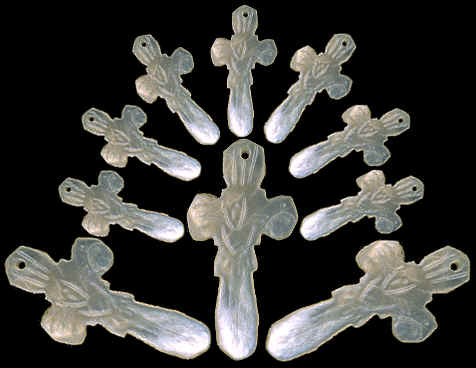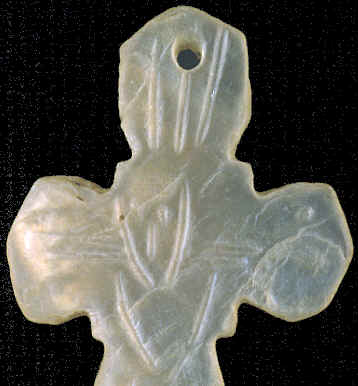|
|||
|
This shell cross was found in 1965 by Dave Carvalho while digging a trench near his house. It's made in a Spanish Colonial style from the California Mission period, around 1800. It's an artifact that represents change---new ideas being transferred from different cultures coming into contact with each other. This example was probably made by a local California native American who copied the design from a metal crucifix. |
|||
|
|||
|
Native Americans were familiar with many different symbols representing crosses, such as the swastika design. Although these symbols had no relation to the crosses of the Old World. Some of these symbols did represent the division of the four quarters or cardinal points of north, south, east and west. Some native Americans may have seen this symbolic concept in the Christian cross. |
|||
|
|||
|
This shell crucifix is remarkably well preserved. The opalescence sheen on the surface is impressive. This religious pendant was probably worn around the neck. |
|||
|
"REFERENCES"
1912,
Hodge, Frederick Webb, "Handbook of American Indians north of
Mexico," pp. 365-367. |
|||


